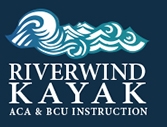General Concepts
Tell me, and I will forget.
Show me, and I may remember.
Involve me, and I will understand.
-Confucius 450 BC
INTRODUCTION
Keeping Room in the “Toolbox”
You are a kayak instructor, sharing your love for the sport. You continue to improve your teaching and paddling skills.
This workbook is designed to provide you with a fundamental understanding of the basic concepts that have lead to the success of many ACA Instructors. In addition ,it outlines the teaching concepts and progressions we expect you to utilize.
To teach kayaking is to pass on a tradition of excellence.
Keeping it Simple
Teaching the one ball way
SIMPLICITY
Cutting Out The Technical Jargon
Catch, power, recovery, bow, stern, rocker, profile, parting lines, beam, propulsion, 45 degree shaft angle, verticality, spin momentum,
blah, blah, blah… How much terminology and technical jargon can beginners digest in one lesson? Conversely, by pairing a specific skill with a widely understood concept, you set your student up for a powerful self-discovery. The possibilities are only limited by your imagination. Technical terminology is valuable AFTER the student has discovered the concept. And of course, there will always be the student who craves it all at once. For this type of learner, try to sprinkle the jargon and terminology
here and there. Remember 95% of our students are committed to a long-term progression with us. Timing is everything. In addition, consider the “one ball” teaching method. A student of juggling is more successful
if he or she starts with one ball, gradually adding a second, and then a
third later on. Most people will drop all the balls if they start with three or more. It’s hard to see when a student is “dropping balls” in their head while learning to kayak. Dropping them all is very frustrating.
Exercise: Make a list of five analogies that relates a kayaking skill or movement to something commonly understood. (Kneeing yourself in the ear for hip snap,for example.)
TEACH WHAT’S COUNTER-INTUITIVE
Building A Solid Foundation
Many kayaking skills are counter-intuitive. Using your hips and head to right the kayak is but one example. A classic example of over-emphasizing an intuitive skill is “smacking” the water with the power face in the high brace. Smacking is so intuitive, students almost always over-emphasize this movement at the expense of the other components of the brace.
The goal of beginner lessons are to build a solid foundation . By focusing on key components that are consistent across multiple kayak maneuvers,
your students will grasp skills quickly. In general, emphasizing the use of core muscles and the lower body vs. exact placement of the paddle is a sure way to get your students to maneuver their kayak more efficiently.
MULTI-LEVEL TEACHING
Your Role as An Equalizer
Despite the best lesson outline, every class is unique. This keeps it challenging and fun for us all. A highly skilled instructor can teach on multiple levels, with multiple students, simultaneously. Think of your role as that of an equalizer. Each student can be engaged at his or her own level while the instructor weaves common threads among all in the group.
Spreading your attention evenly is another important element of effective teaching in a group setting. Occasionally, a student’s rapid progress or monopolizing nature might create the potential for an imbalance in the energy you give to other students. Be mindful to make your “rounds” more frequently and keep everyone feeling challenged and attended to.
TEACH IN SOUND BITES
You’ve Got 30 Seconds
TV commercials are only thirty seconds because that is the average attention span of a human being. Generally, humans don’t have the patience to listen. For many of us, we are waiting for a chance to express ourselves, even when we should be listening. One of the biggest challenges for any instructor in any field of education is to learn how to express concepts in a way that keeps the student’s attention. (And,
in addition to having a short attention span, most beginner kayakers are also easily confused or overwhelmed.) There are many “tools” for the toolbox in keeping your students attention:
Introduce skills and concepts in the most simplistic terms.
Get the students doing a self-discovery exercise as soon as possible
Use humor
Ask questions
Use the students first name
Teach the “one ball” way
Exercise: Teach your favorite paddling stroke without speaking.
Group Management
Comfort plus safety equals learning
SAFETY AWARENESS
Beginner kayakers entrust us to mitigate their exposure to risk as much as possible. As professionals kayak instructors, we must all operate in a constant state of hyper awareness.
Politely warn students of vehicular traffic hazards and keep them clear of them.
Politely warn students of glass and debris on the ground and make sure they keep their footwear on at all times
Demonstrate assisted launching and landing techniques at all basic lessons and advise this technique until students learn their balance.
Never turn your back to your students or allow them to travel out of your
“area of influence”.
Be fully aware of the exact nature of any medical conditions of students in your group.
As expert kayakers, we can sometimes forget just how overwhelming the experience of learning to kayak among a group of strangers can be, especially for a beginner. There is an art to reading your student’s
expressions and actions to glean their physical and mental comfort levels. Paying close attention to each individual’s body language and facial expression is very important. Of course, there are also obvious signs like
laughing, crying, shivering, or sweating. In addition to paying attention, creating a space where your students can feel comfortable
expressing themselves is key. A comfortable student has very few barriers
to learning. Perhaps the greatest challenge of all are the individuals who show absolutely no signs of discomfort. (Some even act exactly the opposite of their feelings.) In this scenario, a good individual rapport with the student can go a long way.
STUDENT COMFORT
Monitoring Your Student’s Expressions
Professionalism and Presence
Be organized, be heard, be clear
Inspiring Your Students
Wonder Woman, Superman, The Green Lantern, and yes, you! It may be hard to visualize but to the new paddler, you are a superhero. Every minute while in your presence, your students are captivated and they are studying your every move. Once you’ve come down from the high of this realization, remember that you are there to make them feel absolutely zero intimidation.
You’re presence on the water is an inspiration to your students and uniquely you. As instructors, we all have our own style of teaching and communication. Here are the basics
Only wear sunglasses after building a good rapport with all of your students
Speak up and speak clearly at all times
Always paddle with great form in the presence of your students
Remember and use all of your student’s first names
Smile as much as possible

